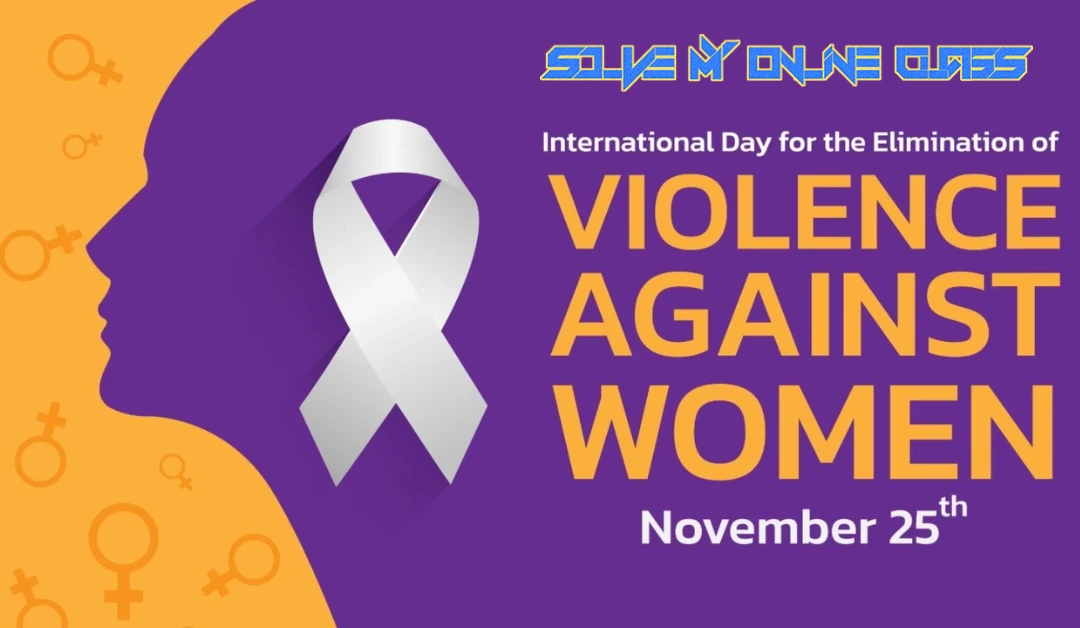Introduction:
The fact that violence against women is still a widespread problem in a world that aspires to equality and progress is depressing. Every year on November 25th, the International Day for the Elimination of Violence Against Women is marked. It serves as a painful reminder of the struggles that women endure around the world. In addition to raising awareness of the disturbingly high rate of violence, this day pushes for reform with the goal of releasing women from the bonds of injustice and fear.
Recognizing the Issue’s Scope:
Gender-based violence is a pervasive issue that cuts beyond national borders, cultural distinctions, and socioeconomic divides. It can take many different forms, such as harassment and aggression towards women as well as financial, emotional, and physical abuse. Unsettling figures show that one in three women worldwide have been victims of physical or sexual abuse, frequently at the hands of a close companion. These numbers highlight how urgently coordinated actions to address and resolve this widespread problem are required.
Violence’s Effect on Women:
Beyond the acute physical pain, violence against women has far-reaching implications. It undermines a woman’s self-esteem, causes long-lasting emotional damage, and makes it more difficult for her to fully engage in society. Beyond causing personal agony, violence against women has a negative impact on society as a whole and impedes social and economic advancement. It prolongs cycles of poverty and inequality by preventing women from accessing healthcare, work opportunities, and education.
Breaking the Stillness:
The widespread culture of silence surrounding violence against women is one of the biggest obstacles to its prevention. A lot of victims are afraid to come forward because they feel ashamed or stigmatized by society. Therefore, programs that motivate survivors to come forward and ask for assistance must be part of any attempt to end violence. Breaking down the barriers that allow violence to continue requires creating a safe space for victims to talk about their experiences.
Legal Structures and Implementation:
Strong legal structures are necessary to combat violence. All nations must make sure that their judicial systems are capable of adequately handling matters involving violence against women. This entails strict legislation, effective law enforcement, and a judiciary that places a high priority on women’s rights and safety. Regardless of the location of the violence, international cooperation is essential to addressing cross-border problems and holding offenders accountable.
The Role of Education in Creating Change:
In order to dispel preconceptions, develop empathy, and advance gender equality, education is essential. Societies may create a future generation that rejects violence and prejudice by incorporating comprehensive and age-appropriate instruction on consent, respect, and gender equality into school curricula. Outside of educational institutions, community outreach initiatives and awareness campaigns can help destroy negative attitudes and ideas that support violence against women.
Empowerment of the Economy:
One of the most important aspects of the battle against violence is economic empowerment for women. Women who are economically independent are better equipped to leave abusive relationships, are less vulnerable, and are able to make decisions that are in their best interests. A more inclusive and just society is facilitated by policies that empower female entrepreneurs, eliminate gender pay inequalities, and advance equal opportunities in the workforce.
Technology’s Function:
Technology in the digital age can be a source of vulnerability as much as a tool for empowerment. On the one hand, it gives women a platform to connect with resources, support networks, and other women by sharing their stories. However, it can also be abused for harassment, cyberbullying, and the distribution of inappropriate and intimate photos. Enforcing regulations that address online violence and advance digital literacy and online safety is part of striking a balance.
Conclusion:
The International Day for the Elimination of Violence Against Women urges people to face the harsh realities that women experience around the world, and it acts as a strong catalyst for change. We can work together to end violence against women by realizing the extent of the problem, speaking out, bolstering legal frameworks, placing a high priority on education, encouraging economic empowerment, and appropriately utilizing technology. It is a fundamental human rights issue that requires our attention, dedication, and action; it is not merely a women’s rights issue. Let’s recommit to building a society in which every woman may live without fear of abuse, prejudice, or violence as we honor this day.






